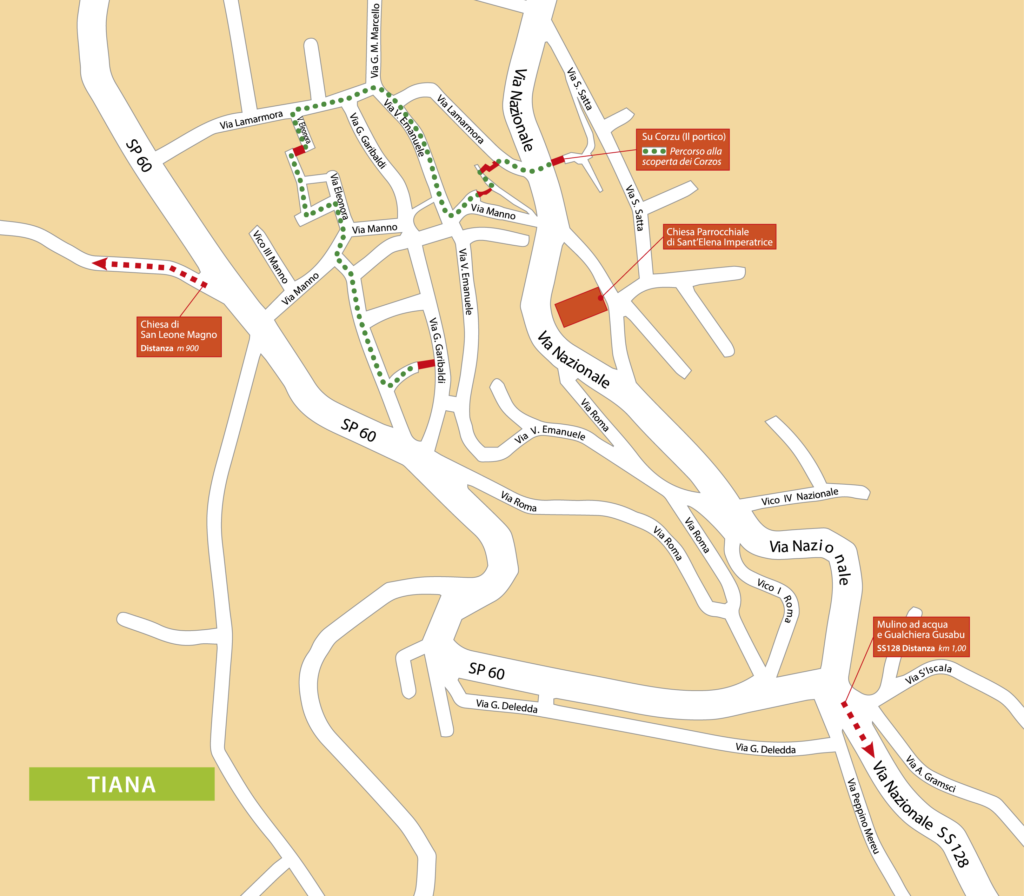Church of Sant’Elena Imperatrice
The parish church stands in the centre of the village in an elevated position above the main street. In this area there were once a small church, probably also dedicated to Sant’Elena, and the village cemetery – at that time distant and detached from the town centre in what were called trighinzos de susu.
The cemetery was dismantled and moved to the area called Coalitto in 1928.
The current building was completely restored in the last decade of the 19th century at the behest of a private citizen. The original building was in such poor condition that Francesco Zedda, who lived in Cagliari but was originally from the village, took charge of its restoration. This event is recorded on a plaque in a side chapel.
Between 1891 and 1892, the building was completely dismantled, renovated and remodelled; the central nave was enlarged and the chapels were redesigned.
Three chapels on each side currently open onto the wide nave, punctuated by pointed arches in red trachyte. There are decorative motifs carved into the stone at the top of a number of pillars depicting trees and, in one case, fish, a symbol used to represent Jesus, as was the custom in the catacombs of the early Christians.
The statue of Sant’Elena Imperatrice (‘St Helena the Empress’), patron saint of the community, is located in the chapel to the left of the altar. The presbytery, raised above the hall, has two altars. One is currently in use, while the other bears witness to the old rite in which the officiant stood with his back to the hall.
The dome behind the altar is made of exposed red bricks while the roof is made of wooden trusses. The flooring, dating back to the late 19th century restoration, is composed of large black and white marble tiles. The square-shaped bell tower on the left side of the building was erected in the 1920s.
The feast of the patron saint used to be held on August 30 instead of August 18 to allow the farmers, who were busy harvesting wheat, to take part in it, but was changed back to its traditional date in the mid-1950s, as there were no longer so many farmers. It currently takes place over several days with religious rites and civil events, attracting both villagers and visitors from surrounding towns.
Text by Laura Melis

 BIM TALORO
BIM TALORO